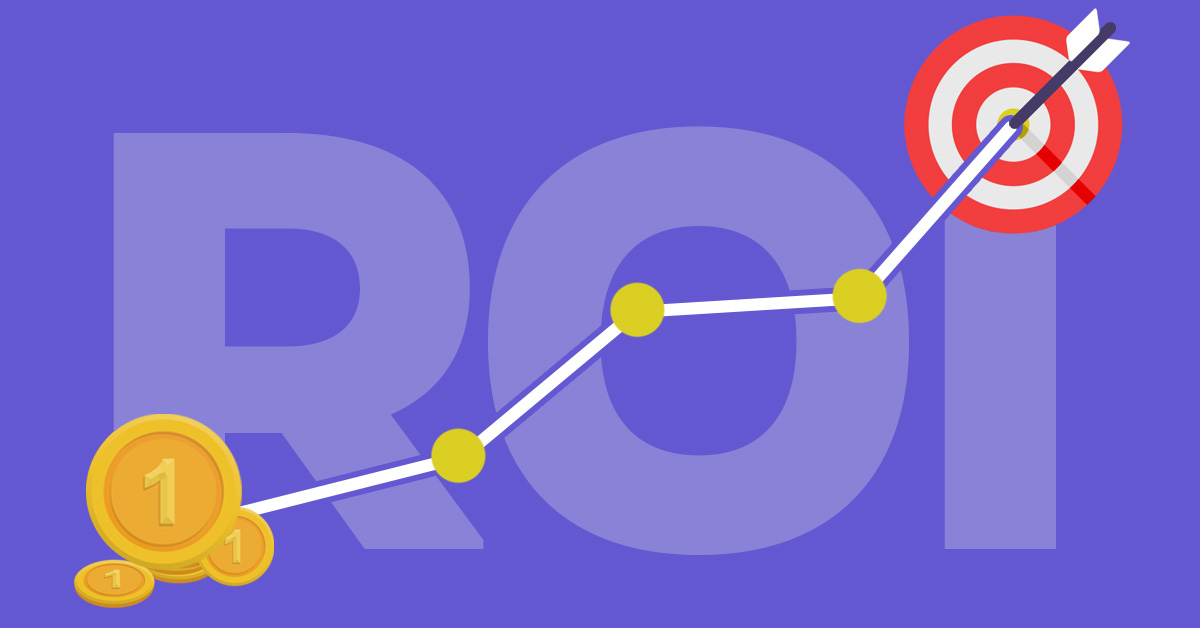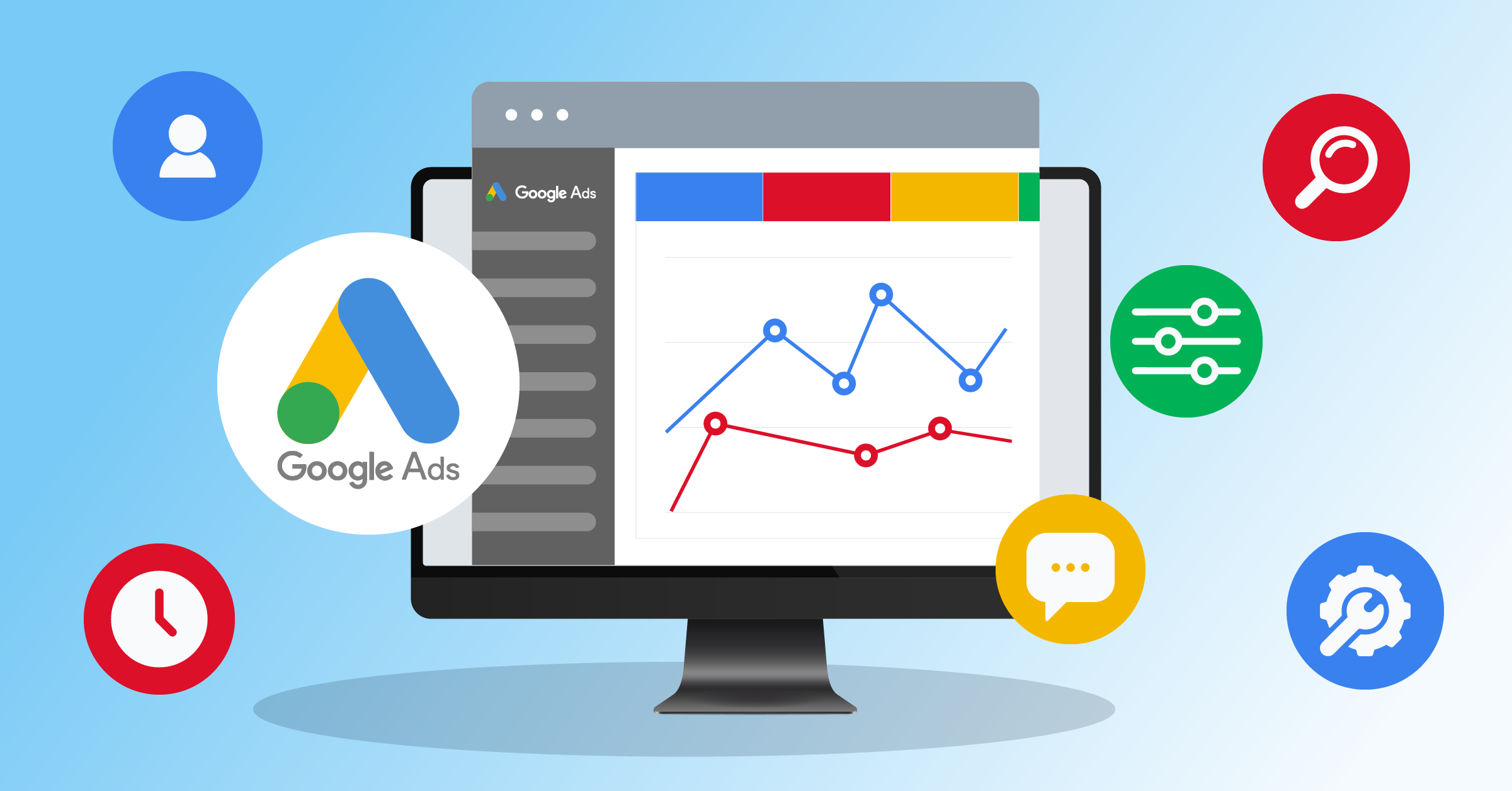
In marketing, every dollar counts. More specifically, how much money is invested vs how much the company gets in return. This is called marketing ROI (return of investment), and it is something that should always be on the minds and agendas of every business.
Marketing ROI is not as simple as just making money. There are techniques, strategies, and calculations that need to be made in order to optimize effectiveness. Depending on the goal of the marketing team (and really the goal of the company as a whole), calculating ROI can help maximize efforts across the board, and influence greater business decisions.
What is ROI in marketing?
Marketing ROI is essentially the amount of money invested versus the amount of money gained. To better visualize this, let’s imagine that the marketing team invested $100. Tracking that $100 throughout its investment period, one could calculate how much of a return that same $100 made.
If that $100 is invested on the company’s behalf in a smart and calculated way, then odds are that it will generate a good amount of activity, thus resulting in better marketing ROI. ROI is calculated to test a given campaign’s profitability, which is always on the mind of business owners and their employees.

Of course, you can do this with any amount of money that a company invests. It could be as little as a couple of dollars all the way up to as much as the company is willing to spend. The goal is to quantify the investment and spending in a comprehensible measurement.
Marketing ROI is about more than calculating how much money has been made. It’s about understanding what campaigns and strategies work well, and what doesn’t. Attaching a dollar sign to any metric is a great way to understand its effectiveness.
This is why calculating marketing ROI is such an important metric on multiple levels of the business. For marketers in particular, it helps them understand where to invest.
To elaborate a little further, marketing ROI is a versatile metric. Yes, it can cover all of marketing, but it can also be calculated for specific branches of marketing. We’ll get more into that in the next section.
How to calculate marketing ROI
When calculating ROI, there are many different ways you could go about it. For most businesses, there are 2 basic formulas:
Net income / investment costs = ROI
or
Investment gain / Investment base = ROI
These two formulas can be applied to essentially any cost versus gain scenario across the company, whether it be marketing, development, advertising, etc. The easiest way to think about it is by taking some sort of gain or benefit that the company has achieved and dividing it by the cost of acquiring it.
For a better visual, imagine that a car collector purchased a vintage Ferrari 10 years ago for $200,000. Recently, he sold it for $500,000. Plugging that into the marketing ROI formula would look like this:
($500,000-$200,000) / $200,000 = 1.5 or 150%
When companies lay out ROI in percentages, it helps them to better visualize the potential for an investment. Based on that final percentage, it may or may not be worth it.
Of course, this formula can be applied to basically everything, not just vintage Ferraris. For a company, it might be investing in a new website or a new commercial location. Regardless, the basic formula will stay the same.
Email marketing ROI
When it comes to email marketing ROI, it’s exactly as it sounds. Email marketing ROI is simply the amount of money invested into email marketing versus the amount of money returned. For email marketing, some of the investments may include lead collection, targeted campaigns, and so on.
This may seem like it would be difficult to track, but it’s not as bad as it sounds. For example, when a newsletter is sent out, it can encourage readers to click on links that direct them back to the main website, where they might follow through with a purchase of some sort. Through these links, purchases can be tracked, and marketing ROI results can be properly calculated.
Email marketing ROI exists in many forms. Most often, it exists in straight up profits for the company. But how that profit manifests may not be as obvious. Here are a few examples:
Increasing general profits
It’s not really a secret at this point that email marketing is incredibly effective. In fact, there are many reasons why email marketing is so effective. Each year, more and more customers, leads, and even prospects are interacting and converting through email alone.
Using that knowledge above, we begin to understand how email marketing impacts the marketing efforts of the entire company.
According to Neil Patel, email marketing has the highest ROI of any other marketing sub-category. This is why it is so incredibly important to have solid and data driven email marketing campaigns regularly. If the attribution model is applied properly and the campaign is an effective one, you can expect to see significantly higher percentages in email marketing ROI than in any other marketing category.
Increasing conversions
Conversions don’t always lead to a sale immediately. Leads typically need to be nurtured quite a bit before they hit the bottom of the conversion funnel. But, when they finally do, not only does the revenue of the company increase, but the conversion rate as well as the marketing ROI percentage improve.
A benefit of using email marketing is that you can keep in contact with these leads and prospects fairly easily until they finally do convert.
Of course, calculating your marketing ROI efforts for simply nurturing will prove to be a bit of a challenge. For this, the value of each touch point will need to be set, and the prospect/lead tracked through each one of said touch points accurately.
For this, a good CRM automation platform will make a massive difference. Using the data given by the CRM (or even an email automation tool, for that matter), ROI for email nurturing campaigns can be calculated more accurately.
Increasing traffic
Even if email recipients do not carry on to buy anything, they can still boost your website traffic numbers considerably. To top that off, you can rest assured that the traffic going to the website is relevant traffic, as the intent should be very clear.
This is a good example of how a return of investment is not necessarily always money in pockets. Sometimes, like in this case, it’s something that isn’t quite the same, but equally as valuable.

The more people that come to your website and spend time there, the more Google looks at your website as an authority in your field. In the long run, this can even be considered more valuable than making a conversion.
Increasing brand awareness
Brand awareness is incredibly important nowadays. Just like you want Google to recognize your website as an authority, you also want consumers to recognize your name. This can be hard to do, but it’s not impossible.
One of the biggest returns in email marketing is people recognizing your name and associating it with certain products, services, and so on.
If a solid email campaign is set up, and it sends clear messages that provide useful information, then one could argue that bringing awareness to your brand has given a return to your brand. Just as sending the lead to your website may not result in profits earned immediately, brand awareness will only help your brand in the long run.
Content marketing ROI
Content marketing is a huge industry. It’s so huge, in fact, that it can have a huge return if invested in properly. Basically, when it comes down to it, content marketing has the potential to reach an unlimited number of people, not just the ones that are familiar with your brand or are on your email list.
Content doesn’t mean just words on a blog. Content refers to videos, podcasts, and any other “entertainment” that is associated with your brand. As you can imagine, there are limitless possibilities in this field, which means that there are also limitless possibilities for marketing ROI.
Content marketing ROI is not something that you can measure as soon as the piece of content goes live. In actuality, content marketing ROI often takes months to come through to a point where you can measure it accurately.
For example, analytics for a blog post will show very little activity for the first few months while it takes Google time to rank it. For a YouTube video, it might take a few weeks or months for the algorithm to catch the video and start bringing a return. Regardless of the medium for the content, it often takes time, but that doesn’t mean it’s not worth it.
For content marketing in general, there are many ways that a return might come through. Let’s take a blog post for example.
A blog post that went live 6 months ago brought an average of 1,200 visitors per month. According to the analytics, this one blog post produced a 2% conversion rate. Depending on what the conversion action was, you can begin to calculate the ROI of that post. Of course, this is just a vague example.
Now you can imagine the impact content marketing ROI can make when you take all the pieces of content and add them together. That’s where the “unlimited potential” starts to really shine through.
You can compare the ROI of two or more pages to know pages that are delivering better results. You can even use a blog writer to see if it actually performs better or not.
Just like email marketing, marketing ROI in content can often be indirect. For example, if someone shares a blog post or video created by your company, then that increases brand awareness. If the reader follows a link in an article that comes back to your main site, that’s an increase in traffic and potentially a conversion.
Tips for achieving better ROI results
Marketing ROI isn’t necessarily as cut and dry as spending money to make money. There are strategies in place for every branch of marketing that helps each company achieve their results. Below are a few examples of how companies get the most out of their ROI numbers:
Facebook Audience Insights
Facebook has a powerful marketing tool called Facebook Audience Insights. This is a tool created specifically for giving advertisers and companies a better look into their audience so that they can advertise to the right people. Facebook Audience Insights makes it easier to:
Reach specific audiences – By narrowing the search in Facebook Audience Insights, you can essentially pinpoint the right audience at the right time. Use data like location, age, gender, and so on to make sure that the people seeing the ad are the ones that are really interested.

Learn what content resonates with your audience – Facebook audience insights allows you to see and understand what sort of content your audience interacts with best. It does this by identifying topics and trends within the industry.
Gather data on users who follow through – On top of all the suggestions Facebook Audience Insights gives you, it also keeps track of the data of users who are interacting with your ads by commenting, liking, and clicking.
Create ads that work – Using all this data, you can create ads that work for gathering leads and customers.
Of course, all this and more is covered in our article titled “The complete guide to Facebook Audience Insights”, so be sure to check that out if you’re interested to learn more.
Facebook Offline Conversions
Facebook Offline Conversions allows you to track conversions that occur in an offline setting. When you upload sales data, Facebook tries to match the transactions that took place offline. If there is a match, then Facebook gives the credit to your ad. As you can imagine, this sort of data can greatly improve your marketing ROI.

Everything you need to know about this topic is covered in our article titled “The Complete Guide to Facebook Offline Conversions,” so check it out for more information.
Facebook Server Side Pixel
Facebook Server Side Pixel is an API that allows users (in this case, retailers, advertisers, and so on) to track events that occur in-store. These are typically events like phone calls, in-store purchases, and on-sight sign-ups.
This allows the Ads Manager and Events Manager to keep track of essential data, thus contributing even more to marketing ROI.
Server to server tracking is becoming more and more common as cookie-based advertising starts to die. Businesses can still leverage cookies, however, by turning them into ‘server cookies’ (otherwise known as first-party data). Basically, businesses collect data from people who visit their website, transform it into first-party data, and push it directly to the publishing platform.
Use LeadsBridge to achieve better marketing ROI results
As helpful as all these tools are above, it can still be time-consuming to figure them out and use them. By using LeadsBridge, you will eliminate the need for any manual uploads of any kind, as it bridges all of the tools above and more with your favorite CRM for maximum efficiency and results.
Conclusions and takeaways
Marketing ROI is a very important metric to keep track of not only for the benefit of the marketing team but for the success of the company. Marketing ROI allows the company to understand what is working well and what is worth continuing to invest in.
Calculating marketing ROI is simple, but it can be difficult to track across the board. Thankfully, we have plenty of tools at our disposal to help us in this venture.
Facebook comes through with a whole set of tools (Facebook Audience Insights, Facebook Offline Conversions, and Facebook-Server Side Pixel) to make it easier for users to better track how well their investments are working out through the Facebook platform. On top of that, Facebook also makes it simple to track any potential conversions that occur offline, improving the results of your marketing ROI efforts.
LeadsBridge automates the usage of these tools by connecting them with the user’s CRM. Gathering data from one and sending it to another, you can always rest assured that your data is not only safe but accurate, allowing you to make better decisions for the future of marketing ROI.








